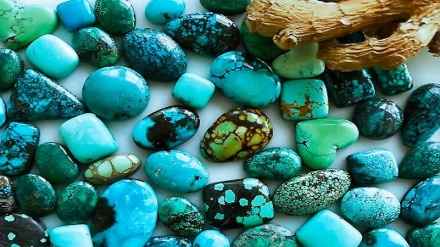Iranian Market (22)
Welcome to another edition of the Iranian Market which tries to get you familiar with the goods produced in the Islamic land of Iran. In this program we are going to discuss the industry of poultry farming in Iran and its ever-increasing growth.
As you may know, one of the essential nutrients for human body is protein. Proteins after water are the most abundant kind of molecules in the body and the function, health and life of human body depend on them. Proteins are found in every living limb and are needed for the growth of all body tissues. Actually, protein is the major structural component of all cells in the body including blood, muscles, brain, hair, skin and nails.
Proteins are found in both animal and vegetable sources human beings take as food. One of the food sources containing animal protein which has been considered as a significant source is the meat of poultry. That is why the industry of poultry farming has a special place in economy. The industry of poultry farming has been considered as a special source for investment in different countries around the world. In this investment, the breeding of phasianidae in comparison with other poultry families, has a special status because of high protein quantity and less cholesterol in their meat.
One of the other activities related to poultry farming is quail farming. Health specialists and nutritionists advise us to eat quail meat as a big source of protein. Quail meat has 5 to 10% more protein compared with other poultry species. The meat is full of unique amino acids that are not found in the meat of other birds. That is why nutritionists prescribe quail meat for children and the elderly whose body tissues need to receive more protein. Nowadays, the meat of quail has been placed in families’ basket and has gained a special place in the sectors of production and consumption of the Iranian market.
Quail farming has been known as a beneficial and advantageous industry in the world. Investment in quail farming business has different features including fast growth of this bird, maturity of the bird in lower ages, short generation period, high number of laying eggs, high quality of the quail meat and the egg.
For the first time, Japan domesticated quails. This trend was then transferred to China and South Korea. In early twentieth century, Europe started domestication of quails by industrial method. After a short while, this method was practiced in West Asia, North Africa, and North America.
In Iran, industrialization of quail farming began since two decades ago. This industry is welcomed in Iran and is growing at a fast pace. In recent years, quail farming in the Islamic Republic has developed spectacularly. Moreover, different species of this bird are raised. According to official figures, about three hundred economic centers in Iran have active businesses in the field of quail farming. In the farms and quail farming centers of Iran, averagely between 6 to 8 thousand tons of quail products are produced. The extra products are exported to the countries in the region. Quail farming business in Iran has mostly been concentered in the cities of Yazd, Meybod, Kerman and the province of Lorestan. These cities are actually the main hubs of quail farming. The Iranian provinces of Kermanshah, Tehran, Zanjan and West Azarbaijan are also other hubs of quail farming.
Quail eggs have high nutritional value in comparison with hens’ eggs. Quail eggs consist of more minerals and less fat. The eggs of this bird have oval shape and weigh around eight to fifteen grams. These eggs are white in color with black or brown dots on them. Some people believe that eating this egg gives a sense of rejuvenation to human body.
It is interesting to note that the goal behind farming quail was firstly production of the bird’s eggs. Health benefits of quail eggs include their ability to improve vision, metabolism, and energy levels, stimulate growth and repair, reduce blood pressure, cleanse body and prevent chronic diseases. Quail eggs are a rich source of protein, vitamin B1, vitamin B2, and vitamin A. It is interesting that many call quail egg as “Vitamin Bomb”!
Iran’s active economic hubs in the field of poultry farming are able to export more than one thousand and 200 tons of meat from the birds including quail, pheasant, and partridge to different countries around the globe. Partridge is also a precious species of poultry with a delicious meat. The meat and eggs of this bird are expensive in comparison with other birds’ meat and eggs. The important species of this bird in Iran is called Alectoris Chukar. This bird is native to Iran. These partridges usually live in mountain slopes.
Iran is also active in the business of ostrich breeding. According to official figures, some 120,000 to 150,000 ostriches are annually raised in Iran. The meat, feather, leather, oil, skin, liver, bones, eggs and eggshells of ostriches can be used in various industries. Iran is ranked the second biggest producer of ostrich meat in the world.
The Iranian provinces of Tehran, Isfahan, Markazi and Golestan have the highest number of ostrich farms. The Islamic Republic is also ranked third for having a high number of ostriches.
Ostrich breeding is a beneficial and advantageous industry. Iran is also active in producing ostrich leather. This leather is exported to different countries including Russia, China, South Korea, Turkmenistan, and Turkey. European countries are also among other major markets of Iranian ostrich leather.
Goose and turkey are other species of poultry bred in Iran. Geese are bred by sophisticated industrial and electrical systems and equipment in Iran. This is while turkey is bred by both traditional and industrial ways. The Iranian provinces of Khorasan, Fars, Markazi, Gilan, Mazandaran, East and West Azarbaijan, Kerman and Isfahan practice the traditional method of breeding turkey.
However, the provinces of Tehran, Isfahan and Qazvin try both the traditional and industrial methods of breeding this bird.
AE/RM/SS


